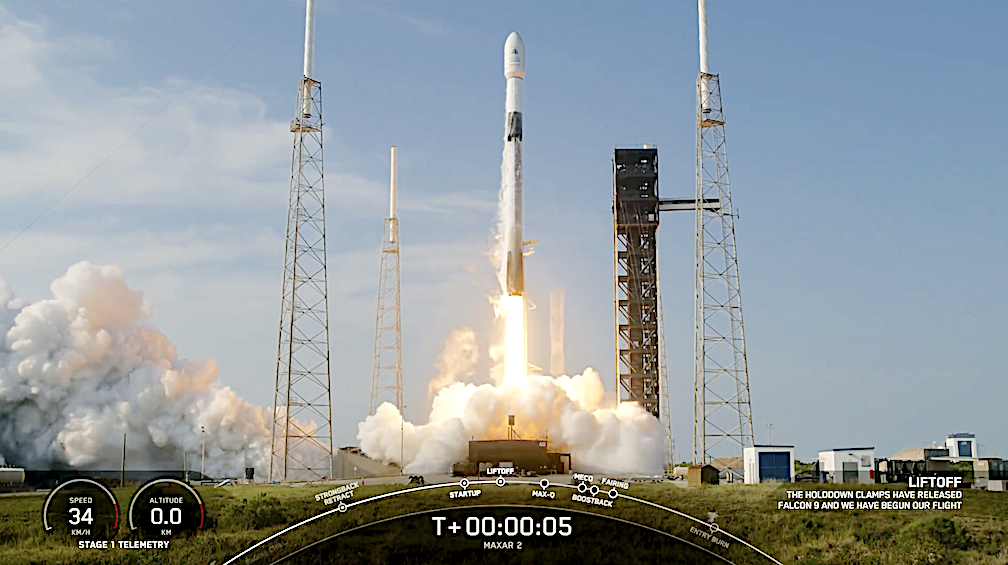
On Thursday, August 15, a warm summer Florida morning at 9:00 a.m. ET, Falcon 9 launched the Maxar 2 mission to low-Earth orbit from Space Launch Complex 40 (SLC-40) at Cape Canaveral Space Force Station in Florida.

These are the second pair of six planned WorldView Legion satellites, which will enhance Maxar Intelligence’s constellation by delivering industry-leading resolution and accuracy. When all six WorldView Legion satellites are launched, it will triple Maxar Intelligence’s capacity to collect 30 cm-class and multispectral imagery. The full Maxar constellation of 10 electro-optical satellites will image the most rapidly changing areas on Earth as frequently as every 20 to 30 minutes, from sunup to sundown.
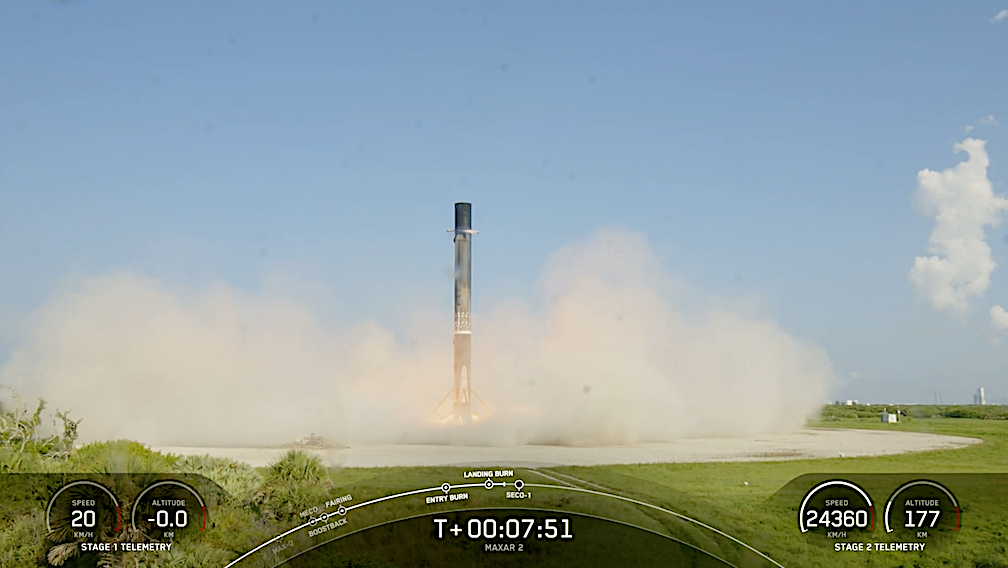
This was the 16th flight for the Falcon 9 first stage booster B1076 supporting this mission that landed 7:48 minutes later at Landing Zone 1, about six miles from where it had launched only minutes before. Moments later, a pair of sonic booms sounded the booster’s return. This booster previously launched CRS-26, OneWeb Launch 16, Intelsat IS-40e, O3b mPOWER, Ovzon 3, Eutelsat 36D, Turksat 6A, and eight Starlink missions.
SpaceX ready to go tomorrow with Maxar 2’s WorldView Legion 3-4 satellites mission

SpaceX is targeting Thursday, August 15 for launch of the Maxar 2 mission to orbit from Space Launch Complex 40 (SLC-40) at Cape Canaveral Space Force Station in Florida. The 60-minute window opens at 9:00 a.m. ET. If needed, a backup launch opportunity is available on Friday, August 16 with a three-hour window opening at 9:00 a.m. ET.
Maxar 2 is the second of three missions with Maxar to deliver their six WorldView Legion satellites to orbit. Earlier this year, Falcon 9 launched the first two WorldView Legion satellites to orbit from California.
A live webcast of this mission will begin about 15 minutes prior to liftoff, which you can watch here and on X @SpaceX.
This will be the 16th flight for the Falcon 9 first stage booster supporting this mission, which previously launched CRS-26, OneWeb Launch 16, Intelsat IS-40e, O3b mPOWER, Ovzon 3, Eutelsat 36D, Turksat 6A, and eight Starlink missions. After stage separation, the first stage will land on Landing Zone 1 (LZ-1) at Cape Canaveral Space Force Station.
SpaceX ready to send second pair of WorldView Legion 3-4 satellites
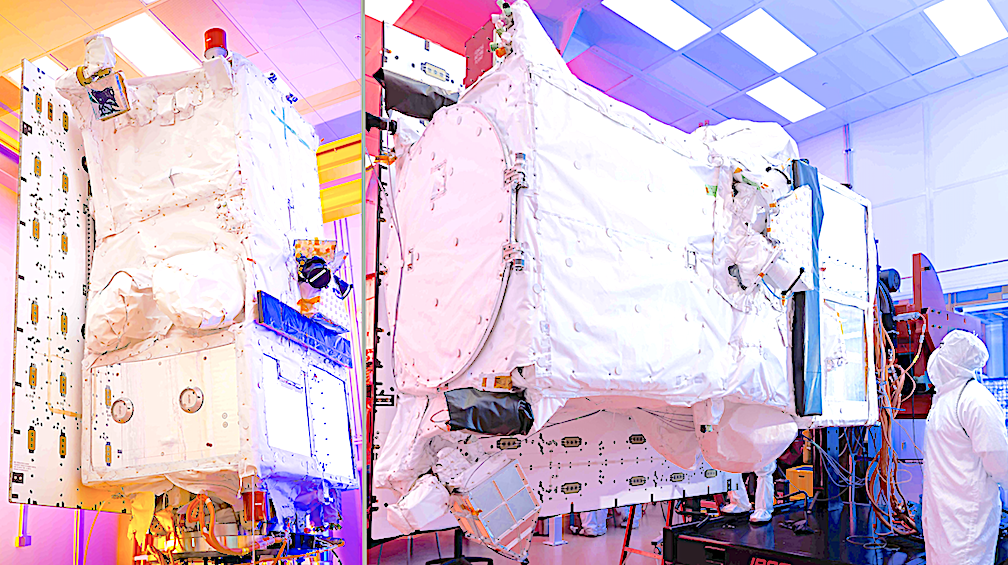
SpaceX will be launching Maxar’s WorldView Legion satellites on Thursday, August 15 between 6 – 9 am PDT, date and time may change. Two WorldView Legion satellites built by Maxar Space Systems for Maxar Intelligence arrived and are preparing for launch at Cape Canaveral, Florida.
These are the second pair of six planned WorldView Legion satellites, which will enhance Maxar Intelligence’s constellation by delivering industry-leading resolution and accuracy. When all six WorldView Legion satellites are launched, it will triple Maxar Intelligence’s capacity to collect 30 cm-class and multispectral imagery. The full Maxar constellation of 10 electro-optical satellites will image the most rapidly changing areas on Earth as frequently as every 20 to 30 minutes, from sunup to sundown.

“WorldView Legion will extend the quality and capability of our industry-leading constellation, redefining Earth observation constellation performance and providing customers with unprecedented access to timely, actionable insights that help drive mission success,” said Dan Smoot, Maxar Intelligence CEO.
These Maxar Space Systems-built satellites are the first Maxar 500™ series buses to complete production at the company’s satellite manufacturing locations in Palo Alto and San Jose, California. The Maxar 500 series bus is a mid-size platform that can be tailored for multiple missions and orbits. As part of the WorldView Legion program, Maxar invested to create a bus with better stability, agility and pointing accuracy; future Maxar 500 customers can benefit from this technology for their missions.
“WorldView Legion and the Maxar 500 series platform is the culmination of decades of experience in building satellites for customer missions,” said Chris Johnson, Maxar Space Systems CEO. “We are excited to reach this important program milestone and look forward to continued partnership on the program.”
The launch of the first two WorldView Legion satellites will be broadcast on spacex.com and on x.com/spacex.
SpaceX set for second pair of WorldView Legion satellites now in Florida for launch
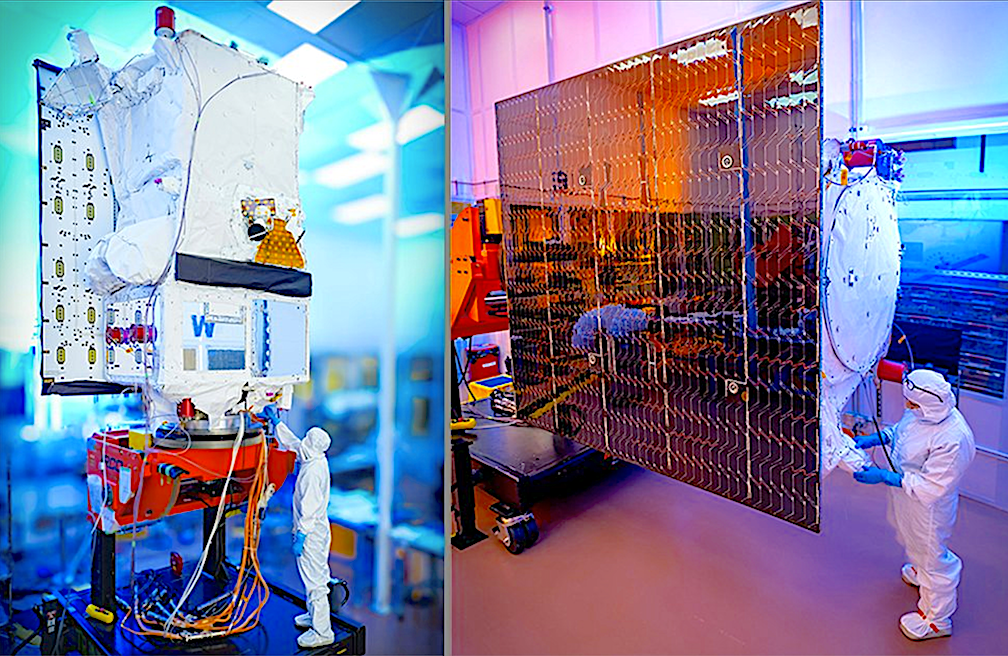
The next two WorldView Legion satellites, which will be the company’s first spacecraft in MIO, are seen here at Maxar Space Systems’ manufacturing facility in Palo Alto, California, shortly before shipment to the launch site.

Drumroll, please: Our next two WorldView Legion satellites have arrived in Cape Canaveral Space Force Station, Florida, and are being prepped for the Maxar 2 mission on a @SpaceX Falcon 9! These will be our first satellites in mid-inclination orbit.
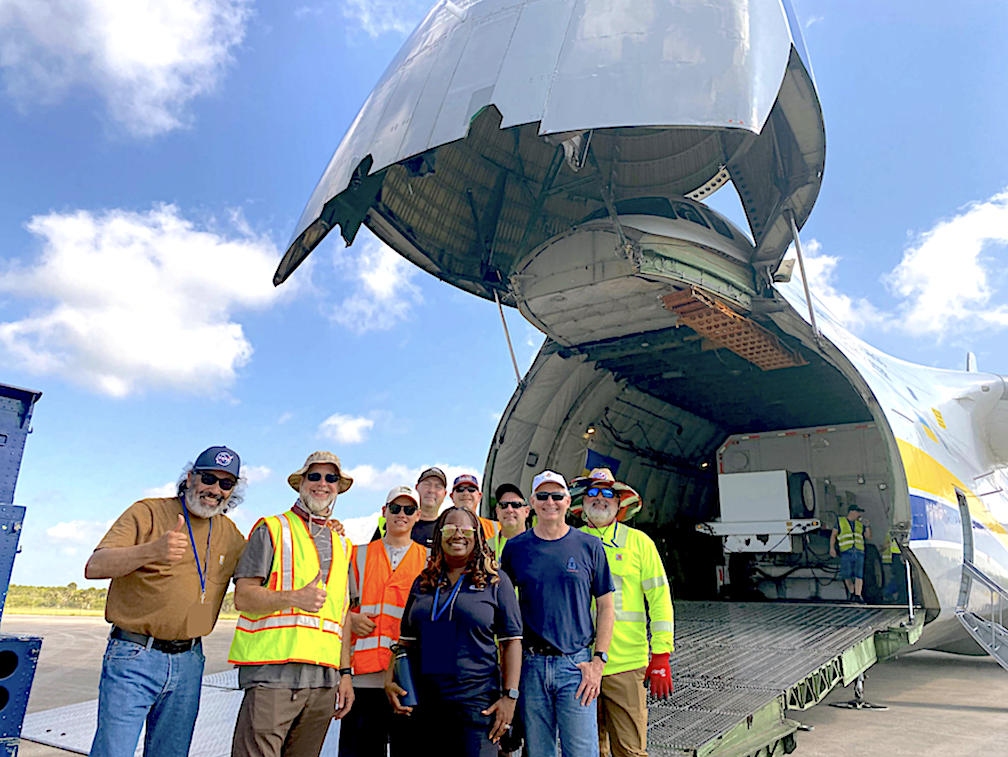
Maxar team members greet the second set of WorldView Legion satellites upon the spacecrafts’ arrival at Cape Canaveral Space Force Station, Florida.
The satellites are the second set of next-generation WorldView Legion spacecraft built by Maxar Space Systems for Maxar Intelligence. The first two WorldView Legion satellites launched in May 2024 aboard a Falcon 9 from Vandenberg Space Force Base in California, and their first high-resolution, 30 cm-class images were released earlier this month.
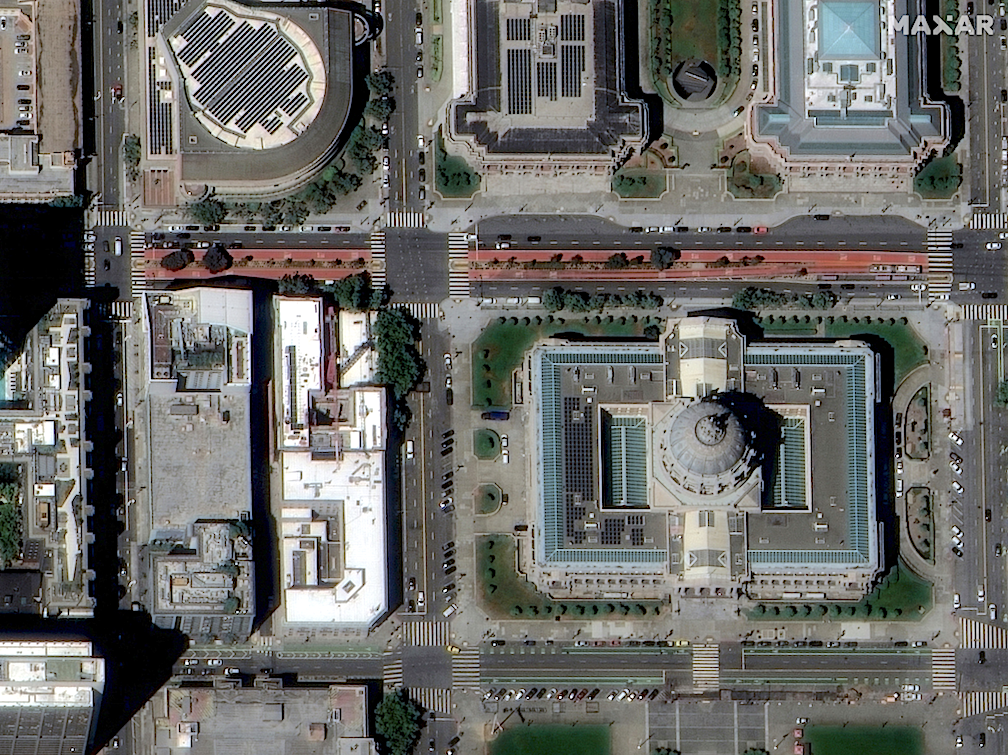
One of the first WorldView Legion images, collected July 16, 2024, of San Francisco City Hall in California. The high-resolution image reveals many small details, including solar panels, lane markings and streetlamps. Such information is essential to build foundational maps for government use cases, consumer applications and mobility and logistics planning.
When all six WorldView Legion satellites are operational, they will help enhance the capabilities of Maxar’s Earth observation constellation:
- Maxar’s capacity to collect 30 cm-class imagery with triple;
- The constellation will be able to collect more than 6 million sq km of imagery daily;
- And Maxar will be able to collect imagery of rapidly changing and high-interest areas on Earth as frequently as every 20 to 30 minutes.
The MIO advantage
The WorldView Legion spacecraft currently being prepared for launch will be the first Maxar satellites in MIO, meaning they will orbit around Earth’s mid-latitudes rather than over its poles in a sun-synchronous orbit, where the rest of Maxar’s constellation operates. The final two WorldView Legions will also be launched into MIO.
Satellites in sun-synchronous orbit usually collect imagery from mid-morning to early afternoon. By expanding to MIO, Maxar’s constellation offers several advantages:
- Better temporal diversity: Images can be collected at various times throughout the day, enabling dawn-to-dusk collection worldwide.
- Faster monitoring: Maxar customers can monitor more areas of interest quickly and frequently.
- Improved observation: Better visibility in regions often obscured by morning fog.
With satellites in both sun-synchronous and mid-inclination orbits, Maxar provides a broader range of data to meet diverse mission needs.
Maxar plans to launch all six WorldView Legion satellites by the end of the year, which will more than double the size of its constellation from four to 10 satellites. By growing the constellation and expanding into MIO, Maxar will achieve near real-time monitoring and dramatically reduce the sensor-to-decision timeline for end users. This will be a game-changer when time is critical during 24/7 national security missions, humanitarian crises and natural disasters.
The launch of the next two WorldView Legion satellites will be broadcast on spacex.com and on x.com/spacex.
